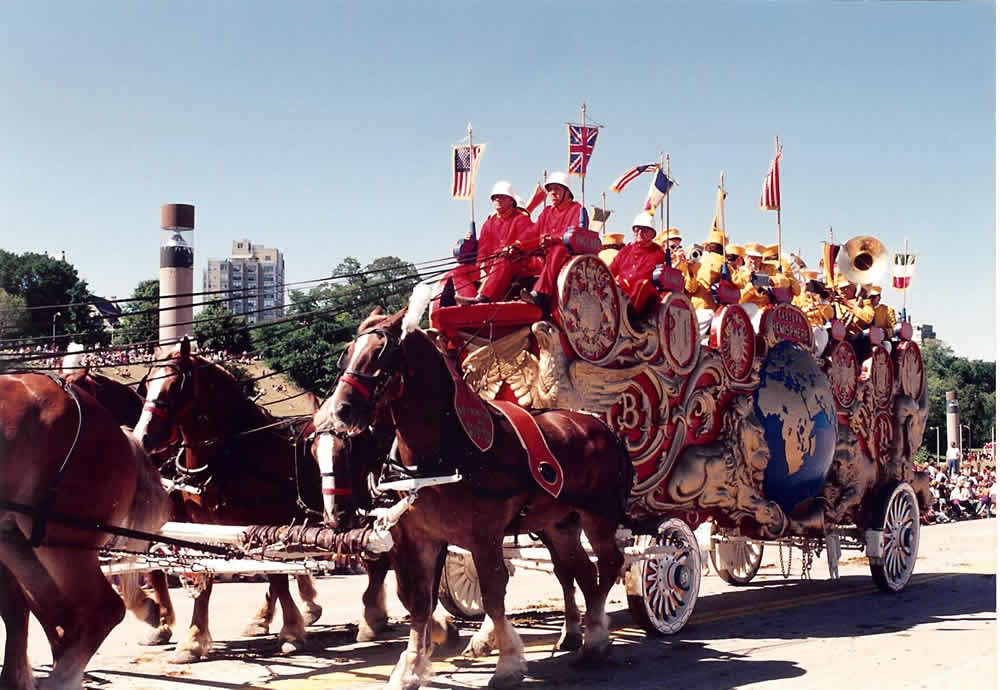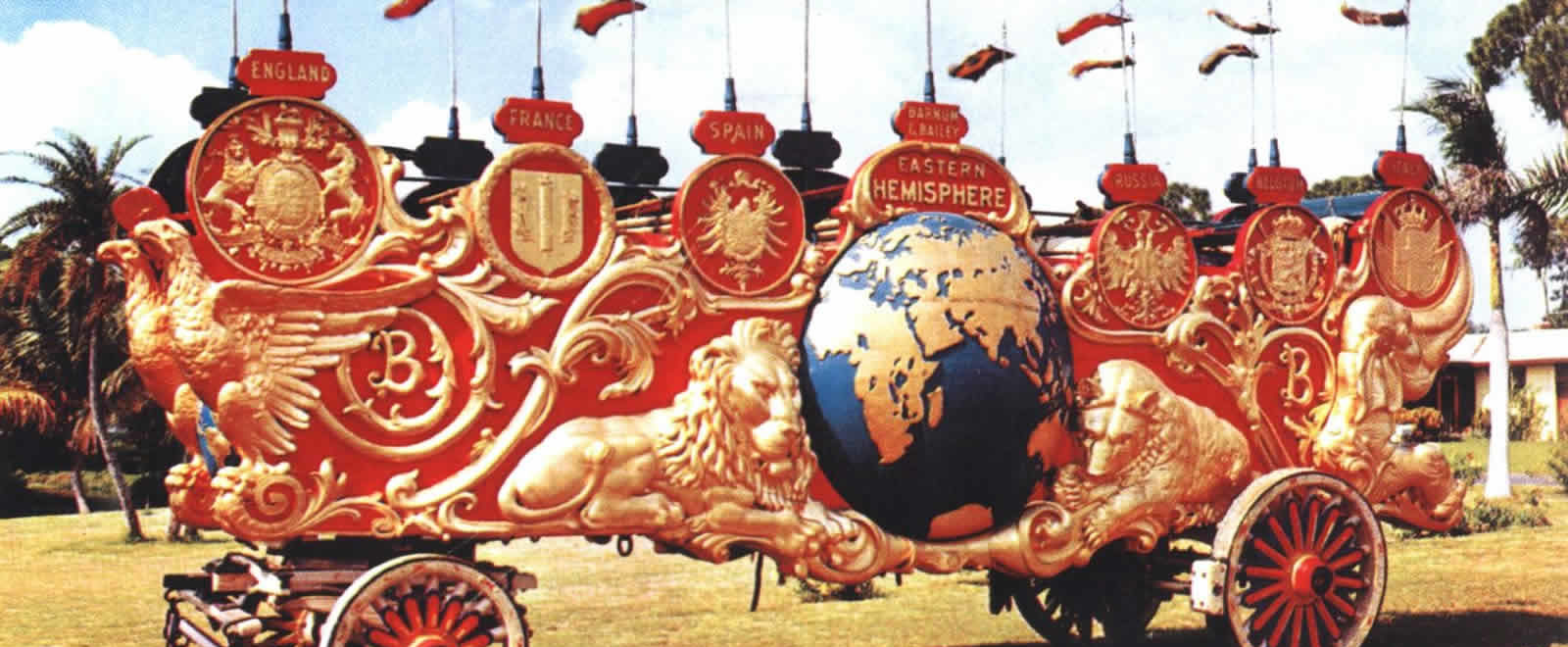‘TWO HEMISPHERES’ FROM GOLDEN AGE OF TRAVELING CIRCUS
When manufactured in the early 20th century, showman James A. Bailey’s circus parade wagon was the most expensive single circus wagon up until that time. “In 1903, travel for most of the world was limited to the ground and sea, but that didn’t stop Barnum & Bailey from touring the nation with their famous traveling circus,” says Tom Slater, director of Americana auctions at Heritage. “Everyone eagerly awaited the grandiose spectacle of the circus parade because it meant the circus was in town.”
EVENT
AMERICANA & POLITICAL GRAND FORMAT AUCTION 6153 is schedule for May 14, 2016, in Dallas and online at HA.com/6153. For information, contact Tom Slater at 214-409-1441 or TomS@HA.com, or Kathleen Guzman at 214-409-1672 or Kathleen@HA.com.
Bailey’s wagon nicknamed “Two Hemispheres” is featured in Heritage’s Americana and political auction schedule for May 14 in Dallas. It’s expected to realize at least $200,000.
The big bandwagon was conceived as the lead feature of the 1903 procession that heralded the return to America of Barnum & Bailey’s “Greatest Show on Earth.”
Show-figure carver Samuel Robb (1851–1928) led a team of artisans that created the elaborate bas-relief carvings that embody this wagon’s theme, Slater says. “Robb carved a great variety of works, from traditional cigar-store Indians to ventriloquist dummies to circus wagons. His carvings for the Two Hemispheres bandwagon represent the union of the Eastern and Western hemispheres as a celebration of James Bailey’s travels around the world.”
Enlarge

“Two Hemispheres”
Circus Bandwagon, 1903
Estimate: $200,000+
The Two Hemispheres wagon led Barnum & Bailey’s daily street parades through 1918, and those staged in 1919-1920 by the Ringling Bros. and Barnum & Bailey combined shows. The last circus use of the wagon occurred in the early 1930s on Fred Buchanan’s Robbins Bros. Circus.
Beginning in the 1950s, the Two Hemispheres bandwagon traveled to museums throughout the country, including the Ringling Brothers Museum of the Circus, the Circus Hall of Fame, and the Circus World Museum.
“It is believed to be the largest circus bandwagon ever built, requiring a team of 40 horses to pull it,” Slater says. “Its stunning condition makes it all the more impressive.”

